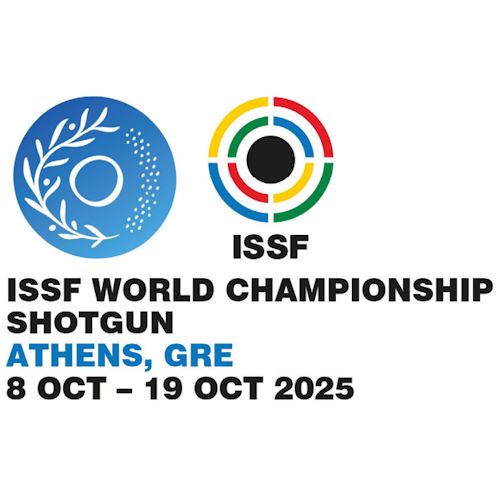
2025 ISSF World Championship Shotgun
Contents
- 2025 ISSF World Championship Shotgun
- Where Will the 2025 ISSF World Championship Shotgun Be Held?
- Which Teams and Shooters Will Take Part in the 2025 ISSF World Championship Shotgun?
- Features of the 2025 ISSF World Championship Shotgun
- Who’ll Win the 2025 ISSF World Championship Shotgun?
- Pros and Cons of the 2025 ISSF World Championship Shotgun
- FAQs
Recomended bookmakers
This competition is part of the 2025 ISSF World Shooting Championships, specifically the shotgun shooting-discipline component. Given that it has been a part of the ISSF World Shooting Championships whenever they’ve been held, this year’s edition of the World Championship Shotgun is the 54th edition of the shotgun-discipline within the larger event organized by the International Shooting Sport Federation (ISSF), the governing body of Olympic shooting events (it also regulates several non-Olympic shooting sport events) under its usual rules and structure, in cooperation with the relevant Greek shooting authorities.
Where Will the 2025 ISSF World Championship Shotgun Be Held?
The 2025 ISSF World Championship Shotgun is held at the M.S.C. Malakasa Shooting Club shooting range, approximately 50km north of Athens. Shotgun is a classic open-air discipline, and Athens is no exception.
As of the official “Entry List by NOC”, i.e., entry list by National Olympic Committees dated September 9, the field stands at 395 athletes representing 66 national federations (66 NOCs), accounting for 505 event starts—so you can expect a deep, genuinely global lineup across trap, skeet, and the mixed trap team.
Unlike some ISSF events that publish specific prize purses (for example, the World Cup Final), the World Championships follow the ISSF General Regulations that require the organizers to award championship medals (gold, silver, bronze) and related honors—there’s no advertised prize-money pool for the 2025 ISSF World Championship Shotgun.
Which Teams and Shooters Will Take Part in the 2025 ISSF World Championship Shotgun?
Athletes, also called shooters, are entered across the various shotgun disciplines: Men’s Trap, Women’s Trap, Men’s Skeet, Women’s Skeet, and mixed-team (Trap) events. Each shooter must have an ISSF-issued ID, have signed an Athlete’s Declaration (2025 edition), and be entered by their national federation by the entry deadlines. Also, there are limits on how many athletes per event a federation can enter: e.g., Skeet Men up to 150 shooters, Skeet Women up to 90, and for the Mixed Team, a maximum number of teams (Trap Mixed Team max. 36 teams) is specified.
“Qualification” for this championship isn’t like a pre-tournament “qualifying competition” but rather entry rules under ISSF regulations and national federation nomination. The main rules are:
- Any ISSF Member Federation (i.e., a national shooting federation recognized by ISSF) may enter eligible athletes (subject to entry limits per event) into the World Championship via the online registration system, within the deadlines set.
- Athletes must meet administrative and eligibility requirements: have an official ISSF ID, sign the updated Athlete’s Declaration, submit required documentation (often a copy of a passport for verification), etc.
- There are maximum entry limits per event per federation; federations can’t enter unlimited shooters in a discipline. The General Information document gives the cap numbers for each event.
So, in short: nations enter shooters according to ISSF rules and deadlines; shooters must satisfy eligibility requirements; and entries are subject to the capacity limits per event.
The entry PDF is organized NOC-by-NOC with a “Total: X” line for each federation and the athlete names underneath; for example, Australia – Total: 11, China – Total: 12, Cyprus – Total: 12, Bahrain – Total: 9, Bulgaria – Total: 7, Canada – Total: 8, Argentina – Total: 3, and AIN (Individual Neutral Athletes) – Total: 12. You can verify every federation’s exact headcount and athlete roster in the document itself.
Features of the 2025 ISSF World Championship Shotgun
Disciplines/stages & dates: The tournament includes four main competition disciplines/events. According to the official schedule:
| Discipline/event | Dates |
| Skeet (women & men) | 10-12 October: two days of qualification (50-target stages), followed by 25-target qualification and finals on 12 October. |
| Trap (women & men) | 15-17 October: similarly, two days of 50-target qualification stages, then 25-target, then finals on 17 October. |
| Trap mixed team | 18 October: qualification and final (75 targets in qualification; final later that day). |
| Opening/training/technical meetings, etc. | 8-9 October for arrival, pre-event training, equipment control, technical meetings; also training before trap on 13-14 October. |
So, in total: three medal-event types (Skeet, Trap, Trap Mixed Team), each with men’s/women’s separately as relevant. Skeet and Trap each occupy ~3 competition days each, and the mixed team has one competition day.
Elimination format: Here are the ways the elimination is structured, based on ISSF Shotgun Rules and the published schedule. Some parts are standard in ISSF Shotgun; others are specific to the 2025 Athens World Championship.
- Qualification phase:
- For Skeet and Trap individual events (men & women), the qualification consists of 50-target stages over two days, followed by a final 25 targets on the third day (or part of final qualification day) before the “Final” match.
- For mixed team Trap, qualification is 75 targets (each team presumably shoots 75 across its two shooters = 150, or per event rules; schedule says “75 targets” qualification for mixed teams) on 18 October.
- Final/medal matches:
- After qualification, for Skeet & Trap individual there’s a “Final” for each (women and men) on the same day after the completion of the qualification.
- The mixed team has a final also following its qualification on the same day (18 October), then the medal ceremony.
- Elimination/sweeping & shoot-offs:
- While the schedule does not say “best-of” or “first-to” in those words, ISSF Shotgun Rules apply: in case of ties for places that determine who advances to finals or determines medal positions, shoot-offs are used.
- Finals in these shotgun events are also “reset” – qualification scores do not carry over to the final. Everyone in the final starts from zero (this is standard per ISSF Shotgun Rules).
- Number of shooters advancing to finals:
- Typically, for individual Skeet and Trap, the top six from qualification advance to the final. This is consistent with recent ISSF rules.
- Mixed team final elimination:
- For mixed team Trap, the final involves elimination among teams, usually starting from all qualified teams and then elimination in rounds (lowest scoring teams are eliminated in stages) until the medal match. For example, ISSF rules for mixed team Trap often use the top 6 teams in the final, with rounds of elimination: after some number of targets, one team is eliminated, etc., until two remain to contest gold. This aligns with how ISSF sets mixed team finals in World Cups, etc.
Who’ll Win the 2025 ISSF World Championship Shotgun?
Here are several top contenders and favorites for the 2025 ISSF Shotgun World Championship in Athens—based on recent results, rankings, Olympic pedigree, and season momentum:
- Vincent Hancock (USA, Men’s Skeet) — A legend in the discipline, often considered among the best ever. He recently won gold at the Lonato World Cup in Men’s Skeet.
- Austen Smith (USA, Women’s Skeet) — Olympic medalist in 2024; strong in ISSF events. She has shown consistency and is always a threat in big meets.
- Laetisha Scanlan (Australia, Trap & Mixed Team Trap) — Winner in Trap Women and part of the Mixed Team at Lonato, among others. Her form this season marks her as a strong candidate for medal positions.
- Fatima Gálvez (Spain, Trap Women / Mixed Team Trap) — Always competitive in international shotgun events; her performances lately suggest she could be in the running.
- Kimberly Rhode (USA, Women’s Skeet) — A very seasoned shooter with Olympic and ISSF World Cup successes. Her experience gives her a strong edge in high-pressure finals.
- Christian Elliott/Dustan Taylor (USA, Men’s Skeet) — Both have had strong seasons on the World Cup circuit; “ones to watch” for podiums.
Fans and media typically track shooting-related betting markets through specialist international sportsbooks — top-rated bookmakers that cover Olympic and niche sports, not just mainstream football or basketball. Keep in mind that odds appear late: Markets often open only a few days before the first qualification rounds. Most popular markets are outright winner/medal odds (odds on which shooter or nation takes gold, silver, or bronze), head-to-head markets (sometimes bookies will pit two top athletes against each other, e.g., “who finishes higher”), and team/mixed events (A few markets may cover Trap Mixed Team or overall national medal counts).
We weren’t able to find any recent confirmed data on viewership specifically for the ISSF Shotgun World Championship, but we dug up some past figures and context that help illustrate what the potential viewership might be like. The 2010 ISSF World Shooting Championships in Munich attracted ~592 million TV viewers worldwide. ISSF reported that for the 2011 ISSF shooting season (World Cups & events including Shotgun), over 400 million TV viewers were reached via broadcasts of various ISSF stages.
Where to watch/stream:
- The ISSF official website has a section for the Championship, and they usually provide links or embed livestreams/finals on their “Watch” or “Media” pages.
- ISSF YouTube Channel is a go-to place for streaming finals and major matches of ISSF events.
- The Olympics website (olympics.com) also lists the event and often has live streaming/“watch live” links for ISSF world-level competitions.
Pros and Cons of the 2025 ISSF World Championship Shotgun
| Pros | Cons |
| Prestige and legacy – As the 54th edition, the event continues one of the oldest traditions in shooting sports. | Limited prize pool transparency – No advertised prize money, medals, and prestige are the main rewards. |
| Global participation – 395 athletes from 66 nations ensure a diverse and competitive field. | Niche appeal in sports betting – Markets are small, limited, and open late. |
| Top athletes in action – Olympic and World champions like Vincent Hancock and Laetisha Scanlan compete head-to-head. | Viewership gap – Audience numbers trail far behind mainstream sports despite high potential TV reach. |
| Clear event structure – Three shotgun disciplines (Trap, Skeet, Mixed Trap Team) with finals starting from zero scores. | Complex format for casual fans – Scoring systems, shoot-offs, and eliminations can confuse new spectators. |
| Accessible coverage – ISSF YouTube and website streams provide global access. | Outdoor variables – Weather conditions can heavily influence performance and outcomes. |
| Olympic qualification relevance – Performances influence national selection and Paris 2028 preparations. | Geographic accessibility – Many fans outside Europe rely only on streams due to limited broadcast partnerships. |






